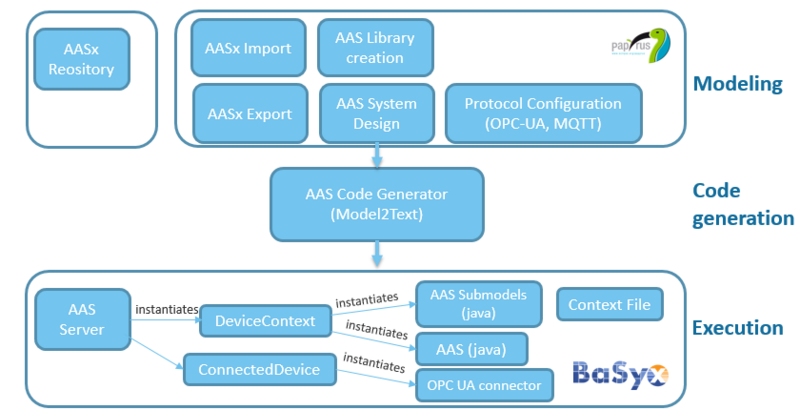Notice: This Wiki is now read only and edits are no longer possible. Please see: https://gitlab.eclipse.org/eclipsefdn/helpdesk/-/wikis/Wiki-shutdown-plan for the plan.
Papyrus/customizations/manufacturing/aas/toolset
AAS Toolset Architecture
The functional architecture of the toolset is depicted below:
The architecture of the toolset is organized as follows:
- Modeling layer: this is the layer that implements all the modeling functionalities for the AAS standard. It is developed as an extension of the Papyrus modeling tool. It enables:
• importing and exporting AASx modules from and to an AASx repository • Creating AAS modules from scratch • Creating Systems designs by combining different AAS modules • Communication protocol configuration before code generation
- Code generation layer: contains the code generation functionality that transforms AAS modules designed Papyrus into executable artifacts that will run in Basyx.
- Execution layer: this is the execution platform that will run the AAS modules. It is based on the open source middleware BaSyx.
- Synchronization mechanisms: as a part of the synchronization mechanism, the BaSyx API has been updated and equipped with the Milo OPCUA Client Interface. The generated code with the help of the helper classes can now enable the asset, submodels and its elements access one or multiple server endpoints that are configured for the OPCUA protocol.

